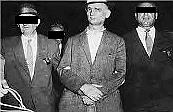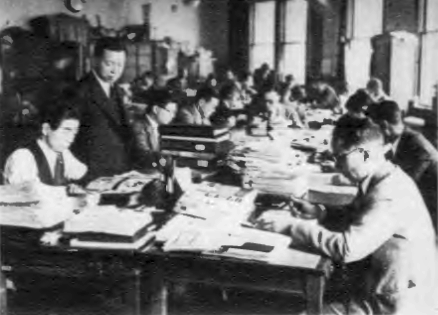|
Yoon Bong-gil
Yun Bong-gil (; 21 June 1908 – 19 December 1932) was a Korean independence activist. His art name is Maeheon (). He is most notable for his role in the Hongkou Park Incident, in which he set off a bomb that killed two Japanese colonial government and army officials in Shanghai's Hongkou Park (now Lu Xun Park) in 1932. He was posthumously awarded the Republic of Korea Medal of Order of Merit for National Foundation in 1962 by the South Korean government. Yun Bong-gil memorials were built in South Korea (Seoul and Yesan), China (Shanghai) and Japan (Kanazawa). Early life Yun Bong-gil was born in June 1908, in Yesan County, South Chungcheong Province, Korean Empire. He enrolled in Deoksan Elementary School in 1918, but the following year he dropped out after refusing colonial education. Also he studied in Ochi Seosuk (a village school that taught Korean and Chinese). As Korea had been made a protectorate within the Japanese empire in 1905, Yun grew up in a troubled country. Loc ... [...More Info...] [...Related Items...] OR: [Wikipedia] [Google] [Baidu] |
Yesan County
Yesan () is a Administrative divisions of South Korea, county in South Chungcheong Province, South Korea. Famous people from Yesan include independence fighter Yoon Bong-Gil. Sudeoksa, a head temple of the Jogye Order of Korean Buddhism, is located on the southern slopes of Deoksungsan in Deoksan-myeon, Yesan County. Its main hall is ''Mahavira Hall, daeungjeon'' (), Korea's oldest wooden building and National Treasures of South Korea, National Treasure 49. In 2009, Yesan was designated a "slow city," one in which traditional cultures and communities are preserved. Transportation * Yesan Citybus Sister cities Domestic * Seocho-gu, Seoul * Seongbuk-gu, Seoul * Yeonsu-gu, Incheon * Anyang, Gyeonggi, Anyang, Gyeonggi International * Knoxville, Tennessee, United States Gallery File:예산-윤봉길-의사-유적-Historic-Site-Related-to-Yun-Bong-gil-Yesan-5.jpg File:예산-윤봉길-의사-유적-Historic-Site-Related-to-Yun-Bong-gil-Yesan-11.jpg Notable people * Park Hyo- ... [...More Info...] [...Related Items...] OR: [Wikipedia] [Google] [Baidu] |
China
China, officially the People's Republic of China (PRC), is a country in East Asia. With population of China, a population exceeding 1.4 billion, it is the list of countries by population (United Nations), second-most populous country after India, representing 17.4% of the world population. China spans the equivalent of five time zones and Borders of China, borders fourteen countries by land across an area of nearly , making it the list of countries and dependencies by area, third-largest country by land area. The country is divided into 33 Province-level divisions of China, province-level divisions: 22 provinces of China, provinces, 5 autonomous regions of China, autonomous regions, 4 direct-administered municipalities of China, municipalities, and 2 semi-autonomous special administrative regions. Beijing is the country's capital, while Shanghai is List of cities in China by population, its most populous city by urban area and largest financial center. Considered one of six ... [...More Info...] [...Related Items...] OR: [Wikipedia] [Google] [Baidu] |
Kim Ku
Kim Ku (; August 29, 1876 – June 26, 1949), also known by his art name Paekpŏm, was a Korean independence activist and statesman. He was a leader of the Korean independence movement against the Empire of Japan, head of the Provisional Government of the Republic of Korea, Korean Provisional Government from 1926 to 1927 and from 1940 to 1945, and a Korean reunification activist after 1945. Kim is revered in South Korea, where he is considered one of the greatest figures in History of Korea, Korean history; his legacy is also somewhat less enthusiastically celebrated in North Korea, due to his anti-communist views. Born in Haeju, Hwanghae Province, Joseon, to a poor farming family, Kim was involved in the Donghak Peasant Revolution in 1894. In 1896, he murdered a Japanese man whom he believed was connected to the assassination of Empress Myeongseong (though he is now generally agreed to be a civilian merchant), for which he was imprisoned until escaping in 1898. Kim was briefl ... [...More Info...] [...Related Items...] OR: [Wikipedia] [Google] [Baidu] |
Shanghai French Concession
The Shanghai French Concession was a concessions in China, foreign concession in Shanghai, Republic of China (1912–1949), China from 1849 until 1943. For much of the 20th century, the area covered by the former French Concession remained the premier residential and retail district of Shanghai. It was also one of the centers of Roman Catholicism in China, Catholicism in China. Despite re-development over the last few decades, the area retains a distinct character and is a popular tourist destination. History Establishment The French Concession was established on 6 April 1849. The French Consul in Shanghai, Charles de Montigny, obtained a proclamation from Lin Kouei (麟桂, Lin Gui), the Circuit Intendant (''Tao-tai''/''Daotai'', effectively governor) of Shanghai, which conceded certain territory for a French settlement. The extent of the French Concession at the time of establishment extended south to the Old City of Shanghai, Old City's moat, north to the Yangjingbang can ... [...More Info...] [...Related Items...] OR: [Wikipedia] [Google] [Baidu] |
An Jung-geun
An Jung-geun (; 2 September 1879 – 26 March 1910) was a Korean independence activist. He is remembered as a martyr in both South and North Korea for his 1909 assassination of the Japanese politician Itō Hirobumi, who had previously served as the first prime minister of Japan and Japanese Resident-General of Korea. An was imprisoned and later executed by Japanese authorities on 26 March 1910. He was posthumously awarded the Order of Merit for National Foundation in 1962 by the South Korean government, the most prestigious civil decoration in the Republic of Korea, for his efforts for Korean independence. Biography Early accounts An was born on 2 September 1879, in Haeju, Hwanghae Province, Joseon. He was the first son of and , of the Sunheung An clan (). Ahn is the 26th great-grandson of Ahn Hyang. His childhood name was (안응칠; 安應七; ). The name originated from seven dots on the chest and stomach, meaning that it was born in accordance with the energy of t ... [...More Info...] [...Related Items...] OR: [Wikipedia] [Google] [Baidu] |
Provisional Government Of The Republic Of Korea
The Korean Provisional Government (KPG), formally the Provisional Government of the Republic of Korea (), was a Korean government-in-exile based in Republic of China (1912–1949), China during Korea under Japanese rule, Japanese rule over Korea. The KPG was founded in Shanghai on 11 April 1919. A provisional constitution providing for a democratic republic named the "Republic of Korea" was enacted. It introduced a presidential system and three branches (legislative, administrative and judicial) of government. The KPG inherited the territory of the former Korean Empire. The Korean independence movement, Korean resistance movement actively supported the independence movement under the provisional government, and received economic and military support from the Kuomintang, the Soviet Union, and France. After 1932, the KPG moved to a number of different cities and eventually settled in Chongqing until the end of World War II in 1945. Several of the buildings used as the headquart ... [...More Info...] [...Related Items...] OR: [Wikipedia] [Google] [Baidu] |
Secret Police
image:Putin-Stasi-Ausweis.png, 300px, Vladimir Putin's secret police identity card, issued by the East German Stasi while he was working as a Soviet KGB liaison officer from 1985 to 1989. Both organizations used similar forms of repression. Secret police (or political police) are police, Intelligence agency, intelligence, or Security agency, security agencies that engage in covert operations against a government's political, ideological, or social opponents and dissidents. Secret police organizations are characteristic of Authoritarianism, authoritarian and Totalitarianism, totalitarian regimes. They protect the political power of a dictator or regime and often operate outside the law to repress dissidents and weaken political opposition, frequently using violence. They may enjoy legal sanction to hold and charge suspects without ever identifying their organization. History Africa Egypt Egypt is home to Africa and the Middle East's first internal security service: The Stat ... [...More Info...] [...Related Items...] OR: [Wikipedia] [Google] [Baidu] |
Tokubetsu Kōtō Keisatsu
The , often abbreviated , was, from 1911 to 1945, a Japanese policing organization, established within the Home Ministry for the purpose of carrying out civil law enforcement, control of political groups and ideologies deemed to threaten the public order of the Empire of Japan, counterintelligence, domestic criminal investigations, high policing, and public security.W. G. Beasley, ''The Rise of Modern Japan'', p. 184, . As the civilian counterpart to the military police forces of the ''Kenpeitai'' (army) and of the '' Tokkeitai'' (navy), the Tokkō's functions were counter espionage and criminal investigation. The Tokubetsu Kōtō Keisatsu was also known by various nicknames such as the and as the . History Establishment The High Treason Incident of 1910 was the stimulus for the establishment of the Tokkō under the aegis of the Home Ministry. With the Russian Revolution, unrest at home due to the Rice Riots of 1918, increase in strikes and labor unrest from the labor movement ... [...More Info...] [...Related Items...] OR: [Wikipedia] [Google] [Baidu] |
Koreans In China
Koreans in China include both ethnic Koreans with Chinese nationality and non-Chinese nationalities such as South Korean ( zh, s=在华韩国人·韩裔) and North Korean ( zh, s=在华朝鲜人·朝鲜裔) people living in China. For this reason, ethnic Koreans with Chinese nationality or citizenship are termed Korean Chinese, ''Joseonjok'', ''Chosŏnjok'' (), and their official name in China is ''Chaoxianzu'' ( zh, s=朝鲜族, p=Cháoxiǎnzú, l=Joseon ethnic group, labels=no). They form a diasporic community, maintaining ties to the Korean Peninsula across generations, including among individuals who have never visited Korea. Korean Chinese are the 13th largest ethnic minority group in China. Most of Korean Chinese live in Yanbian and Changbai within Jilin province. Significant populations can also be found in Heilongjiang, Liaoning, and Inner Mongolia Autonomous Region, with a sizable expat community in Shanghai. According to the South Korean government, the combin ... [...More Info...] [...Related Items...] OR: [Wikipedia] [Google] [Baidu] |
March 1 Movement
The March First Movement was a series of protests against Japanese colonial rule that was held throughout Korea and internationally by the Korean diaspora beginning on March 1, 1919. Protests were largely concentrated in March and April of that year, although related protests continued until 1921. In South Korea, the movement is remembered as a landmark event of not only the Korean independence movement, but of all of Korean history. The protests began in Seoul, with public readings of the Korean Declaration of Independence in the restaurant and in Tapgol Park. The movement grew and spread rapidly. Statistics on the protest are uncertain; there were around 1,500 to 1,800 protests with a total of around 0.8 to 2 million participants. The total population of Korea at the time was around 16 to 17 million. Despite the peaceful nature of the protests, they were frequently violently suppressed. One Korean estimate in 1920 claimed 7,509 deaths and 46,948 arrests. Japanese authorities r ... [...More Info...] [...Related Items...] OR: [Wikipedia] [Google] [Baidu] |





